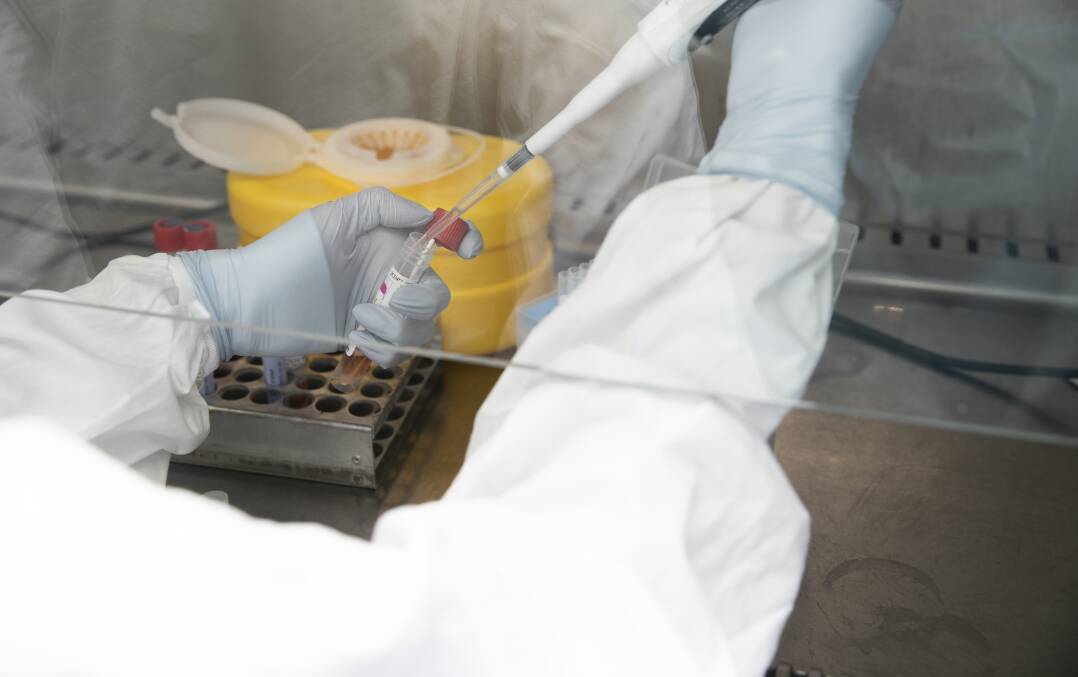
About half of Canberrans may have been infected with COVID-19, with experts suggesting official case numbers now significantly downplay the true extent of the virus's spread.
The real numbers associated with the COVID-19 outbreak in Canberra could be more than 200,000 cases in a city of 431,000 residents, as the testing and quarantine regime shifts to accept a greater risk of transmission.
The ACT is expected to make an announcement on Thursday about changes to household contact isolation requirements, with the territory likely to be brought into line with NSW and Victoria.
Health authorities in the territory were yesterday understood to still be working on when the change would come into effect in the ACT.
A large number of COVID-19 infections in the ACT means natural immunity will combine with vaccination coverage to help lessen the impact of potentially infectious people being allowed into the community.
Associate Professor James Trauer, an epidemiological modelling expert at Monash University, said official COVID-19 case numbers were probably between two and five times smaller than the number of actual infections.
Dr Trauer said Australia did not yet have the systems in place to properly estimate the virus's attack rate - the percentage of people infected in a given population.
"I think a substantial proportion of the population has likely been infected. It's probably two to fivefold underestimated depending on where you're looking at, but it's a bit of a guess really," he said.
Dr Trauer said natural immunity was contributing to stabilised or falling COVID-19 infections, and there was strong agreement among experts natural immunity had a "pretty strong effect" on reduced transmission.
"Now things are more stable, so it's less useful to say what is the exact number of people who are being infected but it's still really useful to say how are things changing day to day," he said.
Dr Trauer said daily case numbers remained a useful tool to understand the outbreak conditions, even if it reflected only a sample of the true caseload in the community.
If testing requirements and isolation rules remained generally steady, fluctuations in daily case reports could give insight into the overall outbreak: if the case number doubled, for example, it could be presumed the overall number of cases doubled, he said.
"We can look at the case notification rates and the rate of change and understand, 'Are we controlling the epidemic at the moment?'," Dr Trauer said.
Dr Trauer said there would be some use to population estimates of COVID-19 infections, which are already produced in some countries, but the focus needed to be on immunity and ongoing vaccination rates.
"I am getting a bit frustrated that there are more important numbers to control at the moment that are not getting reported," he said.
Dr Trauer cited vaccination coverage in aged care and elderly populations, along with third- and fourth-dose take-up rates.
Professor Catherine Bennett, who holds the chair in epidemiology at Deakin University, said the true number of COVID-19 cases in the ACT could be 50 per cent higher than the reported number.
There have been 95,625 cases of COVID-19 reported as a result of positive COVID-19 tests in the ACT since the pandemic began more than two years ago.
Not accounting for reinfections, that amounts to 22.2 per cent of the territory's population.
"We only know about a fraction of the cases. Probably less than 50 per cent of cases are reported," Professor Bennett said.
There were 1180 new infections in the ACT reported in the 24 hours to 8pm on Tuesday, an increase of 364 on the previous day. There were 63 people in Canberra hospitals with COVID in the same period.
ACT Health was on Wednesday asked whether it completed attack-rate modelling for COVID-19 in the territory or whether it had other estimates for total infection numbers, but did not respond before deadline.
Victoria and NSW both announced changes to close-contact isolation rules on Wednesday, with the quarantine requirement to be dropped from the weekend for contacts of positive COVID cases.
Health Minister Rachel Stephen-Smith said ACT authorities still aimed for consistency but the territory would not rush to announce any changes.
She said territory authorities wanted to understand how other jurisdictions would be implementing measures, such as what elements would be part of a legal direction and what would be in guidance material.
"The ACT government is keen to ensure that ACT public health directions are consistent with settings in NSW and Victoria to the greatest extent possible, taking account of our local circumstances," Ms Stephen-Smith said in a statement on Wednesday.
"While there has been close engagement between officials, and I also spoke with the NSW and Victorian Health Ministers [on Tuesday], the final detail on their announcements was only available this morning."
Ms Stephen-Smith said ACT Chief Health Officer Dr Kerryn Coleman briefed the security and emergency management committee of cabinet on Wednesday morning.
Under the NSW changes, household contacts of positive COVID cases will no longer need to isolate from 6pm on Friday. However, they will need to do daily rapid antigen tests and wear masks when they are not at home. Household contacts will also be barred from visiting high-risk settings such as hospitals and aged care facilities.
Similar changes will come into place in Victoria at 11.59pm on Friday. Close contacts there must record at least five negative rapid antigen tests in the seven days after being deemed a close contact.
There would be similar measures in place in the ACT, Ms Stephen-Smith said.







